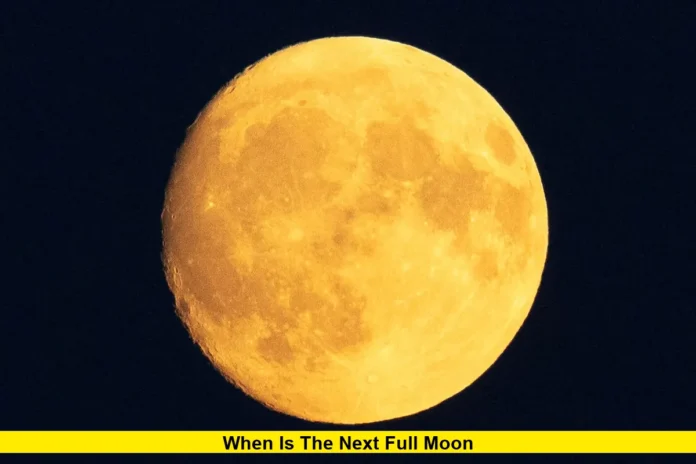The question “when is the next full moon?” is gaining traction as stargazers eagerly await July’s celestial event. The next full moon, widely known as the Buck Moon, will reach its peak on Thursday, July 10, 2025, at 4:37 p.m. Eastern Time. Although it will technically be full during daylight hours, the moonrise shortly after sunset will offer the best views for observers across the world.
This full moon marks one of the most visually striking lunar displays of the year. Due to the moon’s current position in its orbit and Earth’s recent aphelion (its farthest point from the sun), the Buck Moon will appear slightly smaller but more colorful, glowing a deep amber or orange hue close to the horizon.
Why the Buck Moon Matters
The Buck Moon gets its name from a seasonal natural event—July is when young male deer, or bucks, begin sprouting their new antlers. Over centuries, this full moon earned its place in traditional calendars, particularly in Indigenous and farming communities, symbolizing strength, growth, and the peak of summer.
This year’s Buck Moon is especially notable because it rises during a major lunar standstill—a rare celestial occurrence that causes the moon to rise and set at its most extreme points along the horizon. That means it will appear unusually low in the sky, magnifying its golden glow and making for an unforgettable moonrise.
When and Where to Watch the Next Full Moon
To catch the next full moon at its most dramatic, look to the eastern sky shortly after sunset on July 10. While the exact times vary by location, here’s a quick guide to estimated moonrise:
- New York: Around 8:30 p.m.
- Chicago: Around 8:40 p.m.
- Los Angeles: Around 8:10 p.m.
- London: Around 9:35 p.m.
- Delhi: Around 7:05 p.m.
Watching the Buck Moon rise just as the sun sets will create an optical illusion that makes the moon look larger than life, especially when viewed near buildings, trees, or mountain ridges.
Key Point Summary
- Next Full Moon Date: July 10, 2025
- Time of Fullness: 4:37 p.m. Eastern Time
- Nickname: Buck Moon
- Why It’s Unique: Occurs during lunar standstill, low on horizon, visually stunning
- Best Viewing: Right after sunset facing east
- Special Tip: Use a DSLR or phone in “Night Mode” to capture orange glow
Full Moon Photography Tips for July 10
Looking to snap the perfect Buck Moon photo? Here are a few tips:
- Location: Choose a wide-open area—rooftops, beaches, parks, or countryside.
- Gear: Use a tripod, zoom lens (200mm or more), and a remote shutter if available.
- Settings: Set ISO low (100–400), aperture around f/11, and shutter between 1/60–1/250s.
- Composition: Frame the moon with natural foreground like trees, lakes, or skylines.
This month’s full moon will appear particularly photogenic due to its golden color and low altitude. The longer path through Earth’s atmosphere filters the blue light, enhancing the red and yellow hues.
What Else to Watch For During the Buck Moon
Besides the moon itself, July nights offer bonus astronomical treats. Keep an eye out for:
- Antares, the red heart of the Scorpius constellation
- Saturn, rising in the east after midnight
- Early meteors, from the Alpha Capricornids and Southern Delta Aquariids
Pairing these celestial sights with the full moon creates a stunning summer sky show. Bring a blanket, binoculars, and snacks for a full lunar picnic experience.
How the Buck Moon Affects Us
Some believe full moons stir up emotions, energy, and sleep patterns. While not scientifically proven, many people report more vivid dreams, restless sleep, or a surge in creativity around full moons. The Buck Moon, symbolizing growth and transformation, may inspire personal reflection or renewed motivation—especially as we enter the second half of the year.
So, whether you’re watching for science, spiritual energy, or sheer beauty, this full moon is not to be missed.
Stay tuned for the latest full moon forecasts and exclusive updates on celestial events. Share your thoughts in the comments—how do you plan to enjoy the Buck Moon?
